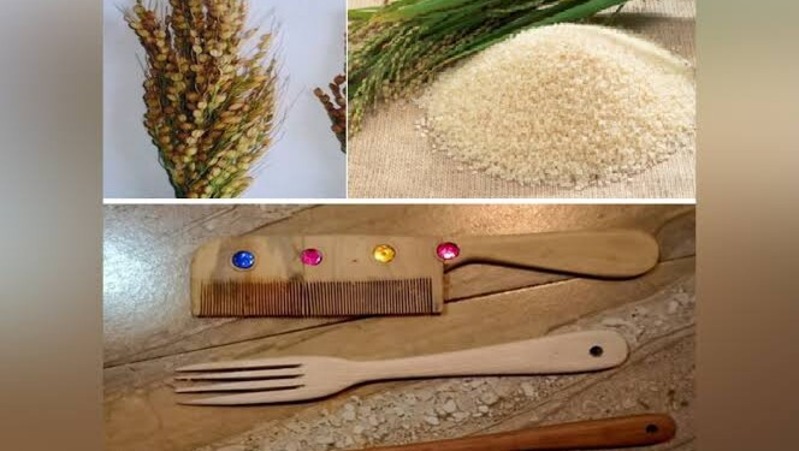Rajouri’s Chikri Wood Craft and Anantnag’s Mushqbudji Rice Receive GI Tag
The rich cultural heritage and diversity of India have once again found their rightful recognition as Rajouri’s Chikri Wood Craft and Anantnag’s Mushqbudji Rice have been bestowed with the prestigious Geographical Indication (GI) tag. This recognition brings to the forefront the unique craftsmanship and traditional practices that are deeply rooted in the history and culture of these regions.

Why This News is Important
This news holds paramount importance for aspirants preparing for various government exams, including civil services, banking, railways, and more. It offers insights into the significance of preserving India’s rich cultural heritage, promoting traditional craftsmanship, and ensuring the sustainability of indigenous agricultural practices. Moreover, the news showcases the role of Geographical Indications in safeguarding the economic interests of artisans, farmers, and local communities.
Historical Context
The history of Chikri Wood Craft dates back generations, where skilled artisans have been crafting exquisite wooden pieces that reflect the cultural essence of Rajouri. Similarly, Mushqbudji Rice has been an integral part of Anantnag’s culinary heritage, passed down through generations. The GI tag adds a new chapter to this historical narrative, recognizing and protecting these age-old traditions from modern challenges.
Key Takeaways from “Rajouri’s Chikri Wood Craft and Anantnag’s Mushqbudji Rice Receive GI Tag”
| Serial Number | Key Takeaway |
|---|---|
| 1 | Chikri Wood Craft from Rajouri and Mushqbudji Rice from Anantnag have been granted the Geographical Indication (GI) tag. |
| 2 | Chikri Wood Craft showcases intricate wooden designs and reflects the cultural heritage of Rajouri. |
| 3 | Mushqbudji Rice is a traditional aromatic rice variety known for its distinct aroma, elongated grains, and exceptional taste. |
| 4 | GI tag safeguards the authenticity of these cultural treasures and supports the livelihood of artisans and farmers. |
| 5 | This recognition highlights the importance of preserving indigenous practices and promoting sustainable agriculture. |
Important FAQs for Students from this News
Q: What is the significance of the Geographical Indication (GI) tag?
A: The Geographical Indication (GI) tag is a form of intellectual property protection that recognizes and safeguards the unique qualities, reputation, and origin of products originating from specific geographical regions. It ensures that products are authentic and helps promote traditional craftsmanship, cultural heritage, and local economies.
Q: How does the GI tag benefit artisans and farmers?
A: The GI tag provides economic benefits to artisans and farmers by ensuring their products are recognized for their distinct qualities. It helps prevent unauthorized use and imitation, thus enabling artisans and farmers to command better prices and market their products more effectively.
Q: What is the historical context of Chikri Wood Craft?
A: Chikri Wood Craft has a rich history rooted in Rajouri’s cultural heritage. For generations, skilled artisans have been crafting intricate wooden designs that reflect the cultural essence of the region, making it an integral part of Rajouri’s artistic legacy.
Q: Why is Mushqbudji Rice important to Anantnag’s culinary heritage?
A: Mushqbudji Rice holds cultural significance in Anantnag’s culinary traditions. Its distinct aroma, elongated grains, and exceptional taste have made it a cherished ingredient in local cuisine, passed down through generations.
Q: How does the GI tag contribute to sustainable agricultural practices?
A: The GI tag for Mushqbudji Rice promotes sustainable agricultural practices by recognizing and protecting indigenous rice varieties. This encourages farmers to continue cultivating traditional crops, thereby conserving biodiversity and preserving local ecosystems.
Some Important Current Affairs Links


















